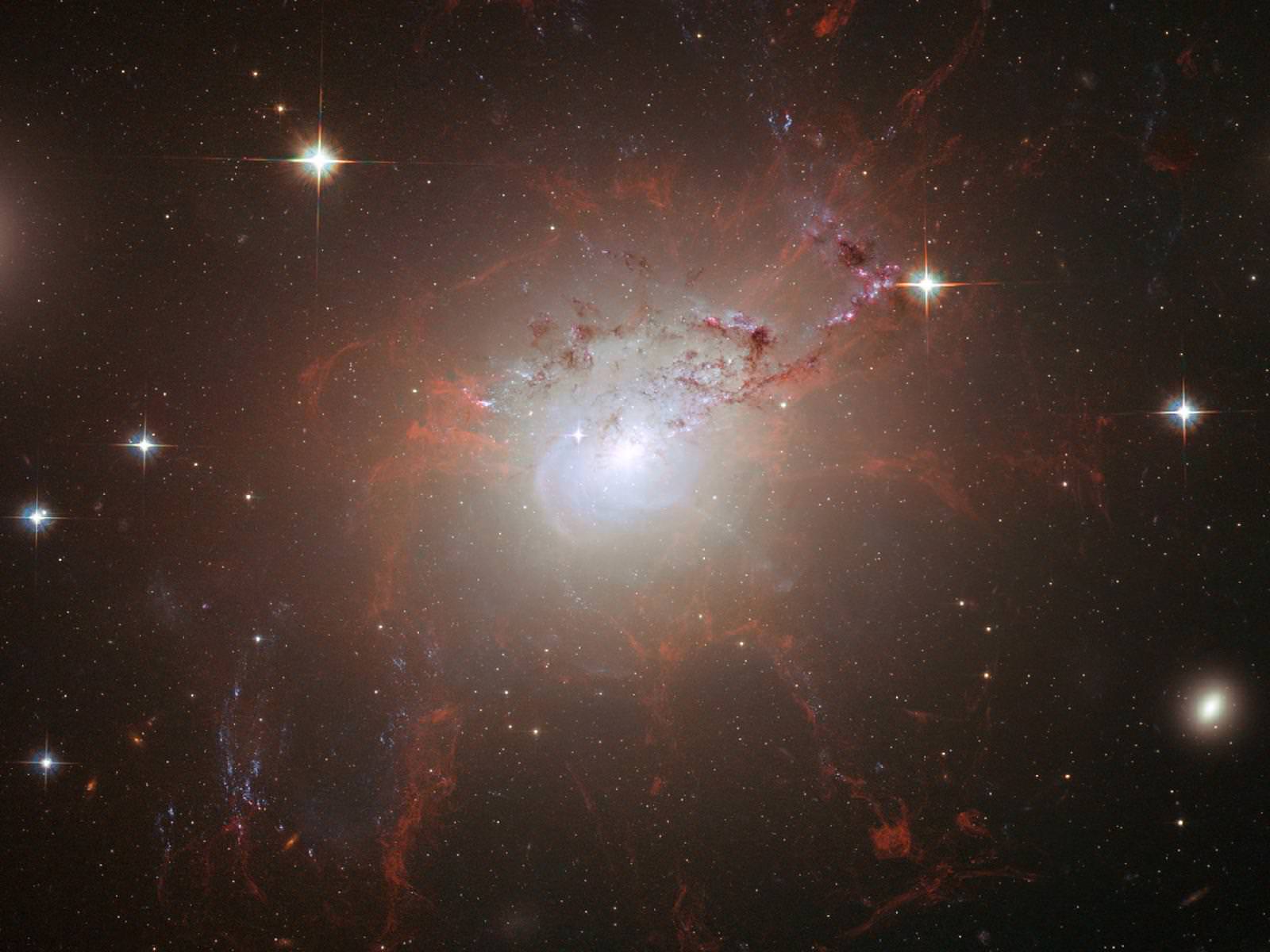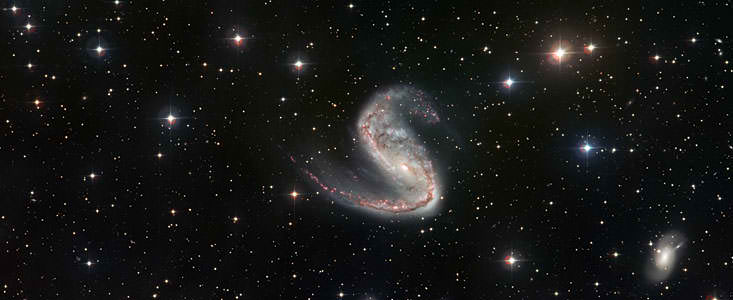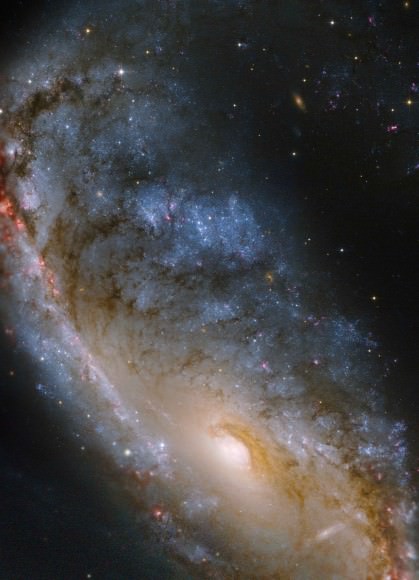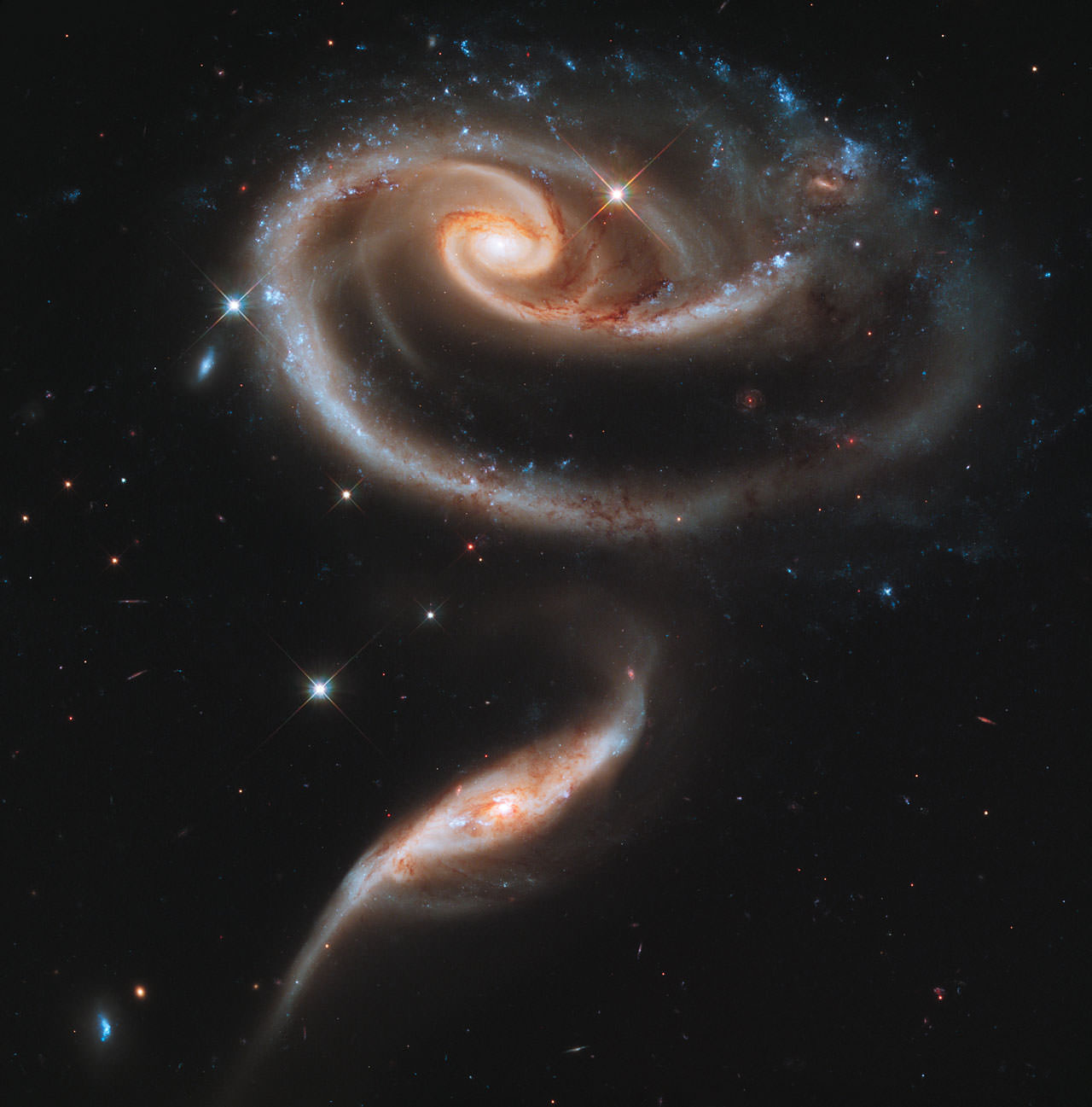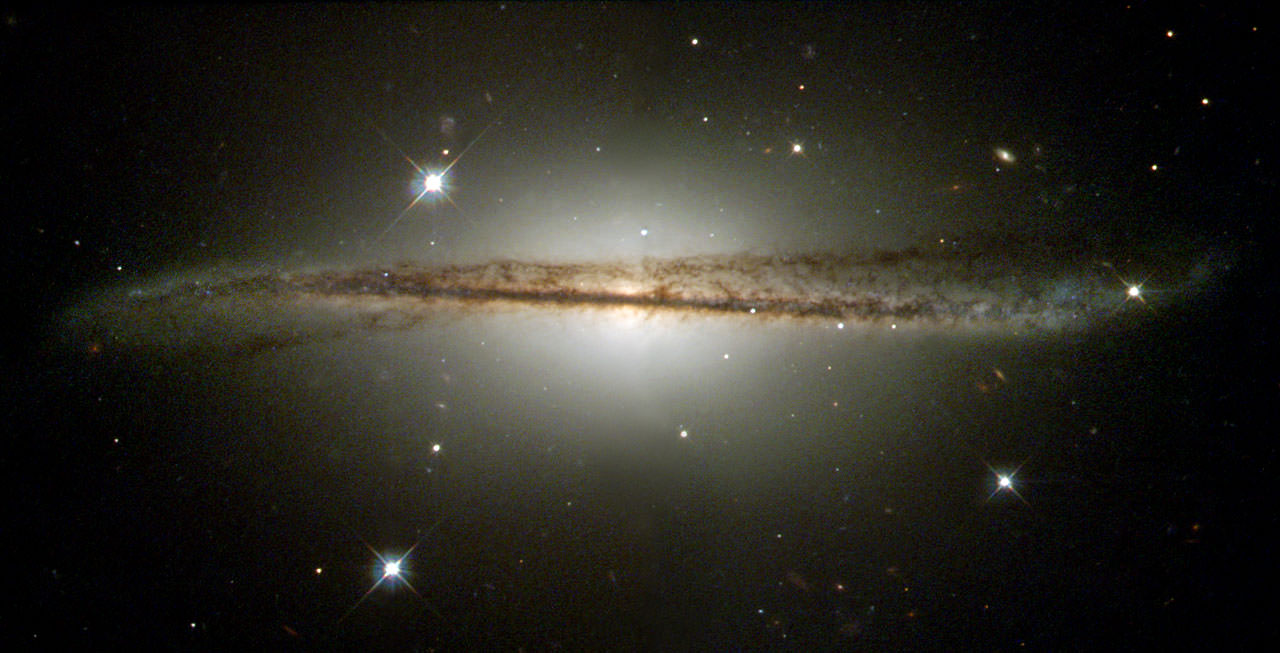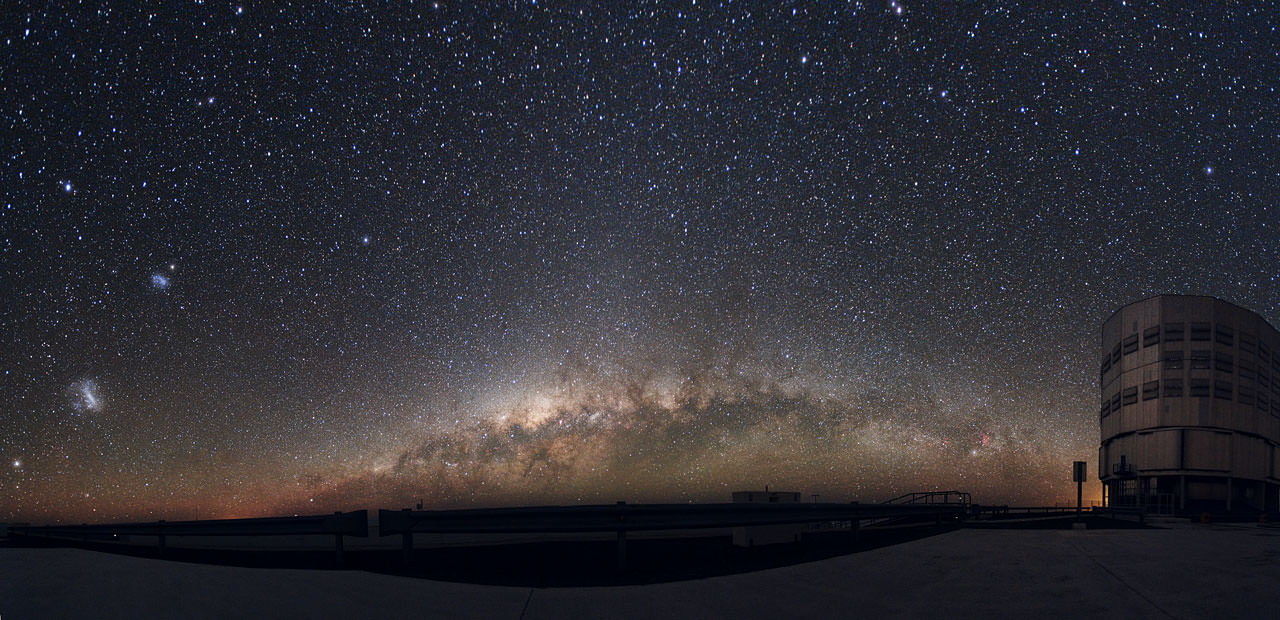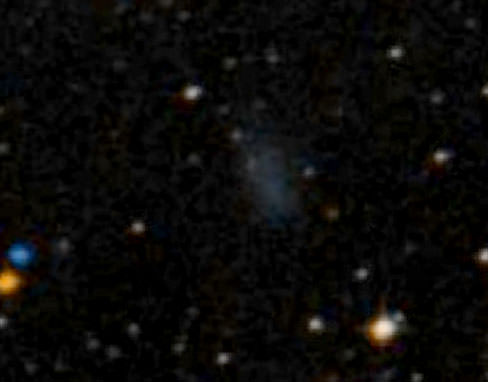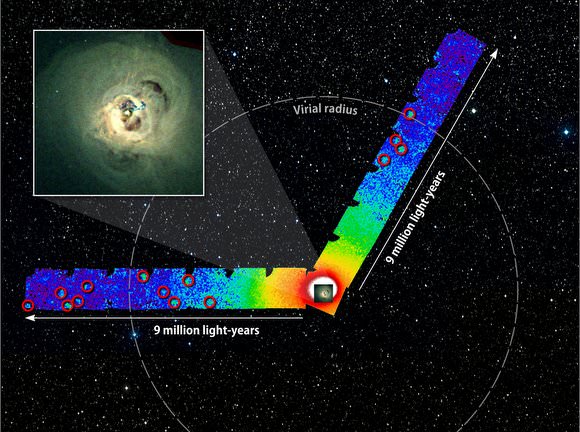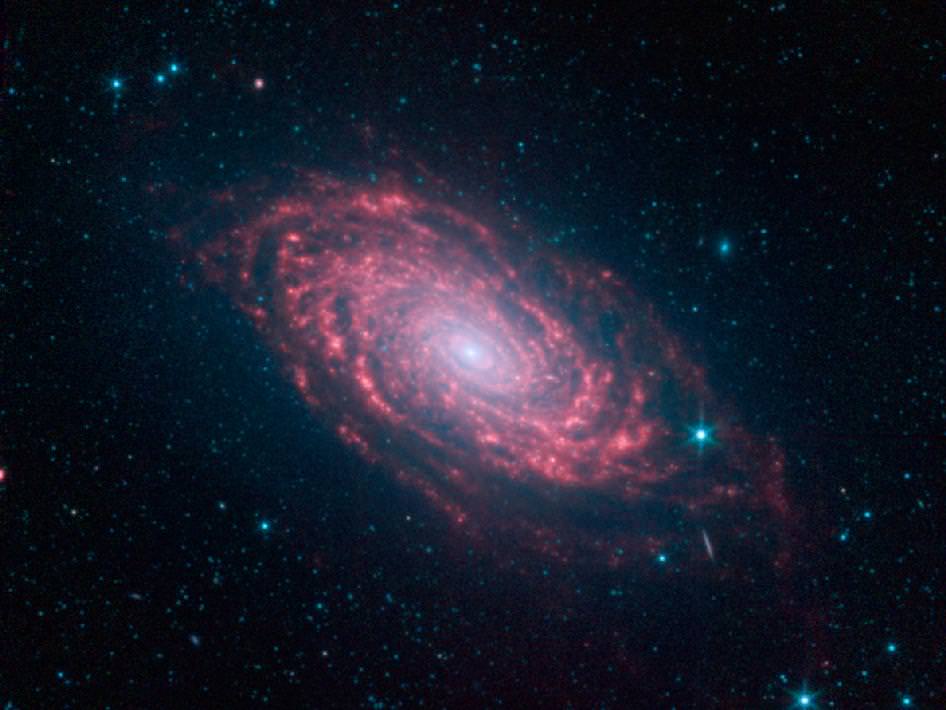[/caption]
When examining clusters of galaxies, astronomers often find massive elliptical galaxies lurking at the centers. In some of these, long filaments of gas and dust extend outwards from the core. One of the best examples of this is the relatively nearby galaxy NGC 1275 which lies in the constellation of Perseus. In this galaxy these tendrils are exceptionally narrow, only about 200 light years across, but as long as 20,000 light years in length. While many groups have studied them, their nature is a topic of much debate. The structures tend to be far removed from star forming regions which can cause the gas to glow. So what energy source powers these gaseous ribbons?
Answering this question is the goal of a recent paper by a team of astronomers led by Andrew Fabian at Cambridge University. Previous studies have explored the spectra of these filaments. Although the filaments have strong Hα emission, created by warm hydrogen gas, the spectra of these tendrils are unlike any nebulae within our own galaxy. The closest resemblance to galactic objects was the Crab Nebula, the remnant of a supernova that was witnessed in 1054 AD. Additionally, the spectra also reveal the presence of molecules such as carbon monoxide and H2.
Another, previous challenge astronomers faced with these tendrils was explaining their formation. Since molecules were present, it meant the gas was cooler than the surrounding gas. In this case, the clouds should collapse due to their self gravity to form more stars than are actually present. But surrounding these tendrils is ionized plasma which should interact with the cold gas, heating it and causing it to disperse. While these two forces would counteract one another, it is impossible to consider that they would balance each other perfectly in one case, let alone for the numerous tendrils in numerous central galaxies.
This problem was apparently solved in 2008, when Fabian published a paper in Nature suggesting that these filaments were being columnated by extremely weak magnetic fields (only 0.01% the strength of Earth’s). These field lines could prevent the warmer plasma from directly entering the cold filaments since, upon interaction with the magnetic field, they would be redirected. But could this property help to explain the lesser degree of heating that still causes the emission spectra? Fabian’s team thinks so.
In the new paper, they suggests that some of the particles of the surrounding plasma do eventually penetrate the cold tendrils which explains some of the heating. However, this flow of charged particles also affects the field lines themselves inducing turbulence which also heats the gas. These effects make up the main bulk of the observed spectra. But the tendrils also exhibit an anomalous amount of X-ray flux. The team proposes that some of this is due to charge exchange in which the ionized gas entering the filaments steals electrons from the cold gas. Unfortunately, the interactions are expected to be too infrequent to explain all of the observed X-rays leaving this portion of the spectrum not fully explained by the new model.
In this article I’ve used the words “magnetic field”, “charge”, and “plasma” throughout, so of course the Electric Universe crowd is going to come flocking, declaring this validates everything they’ve ever said, just as they did when magnetic fields were first implicated in 2008. So before closing completely, I want to take a bit to consider how this new study conforms to their predictions. In general, the study agrees with their claims. However, that doesn’t mean their claims are correct. Rather, it implies they’re worthlessly vague and can be made to fit any circumstance that even briefly mentions such words as I listed above.
The EU supporters consistently refuse to provide any quantitative models which could provide true discriminating tests for their propositions. Instead, they leave the claims suspiciously vague and insist that complex physics is completely understandable with no more understanding than high school level E&M. As a result, the mere scale of their claims is horrifically inconsistent wherein they propose things like the paltry field in this article, or the slight charge on lunar craters are indicative of overwhelming currents powering stars and entire galaxies.
So while articles like this one do reinforce the EU position that electromagnetics does play a role in astronomy, it does not support the grandiose claims on entirely different scales. In the meantime, astronomers don’t argue that electromagnetic effects don’t exist (like EU supporters frequently claim). Rather, we analyze them and appreciate them for what they are: Generally weak effects that are important here and there, but they’re not some all powerful energy field pervading the universe.

